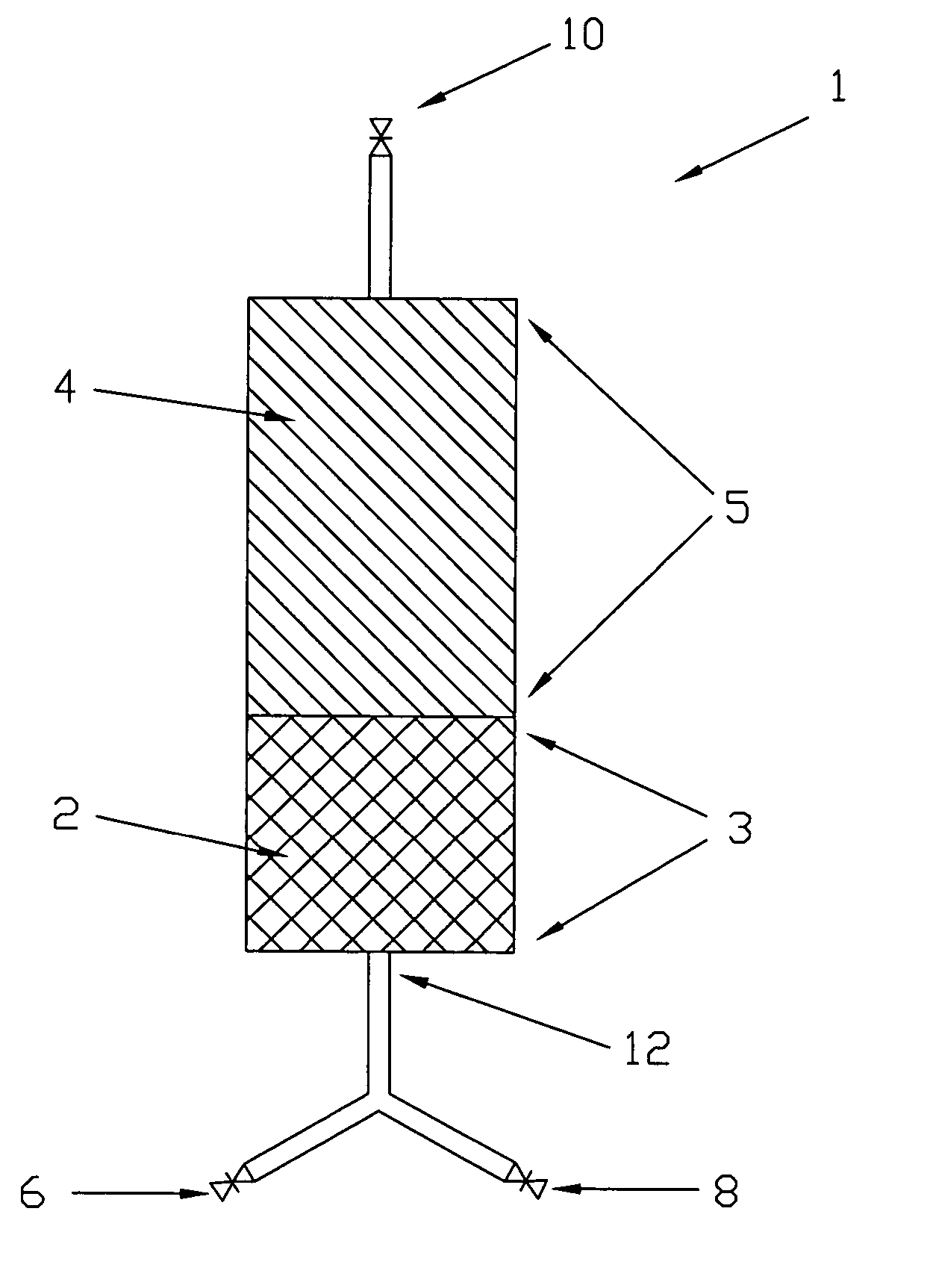Adsorptive separation of gas streams
- Summary
- Abstract
- Description
- Claims
- Application Information
AI Technical Summary
Benefits of technology
Problems solved by technology
Method used
Image
Examples
Embodiment Construction
[0023] Disclosed herein are methods and systems for substantially separating a contaminant gas component from a feed gas stream comprising at least the contaminant gas component, a diluent gas component and a desired gas component, by means of adsorptive separation. The method and associated system utilize at least a first and second adsorbent materials, contained in at least first and second adsorption zones respectively, which may be typically enclosed inside at least one adsorption bed. The first and second adsorbent materials may be compositionally distinct from each other, and may be selected based on their adsorption characteristics relative to the contaminant, diluent and desired product gas components of the feed gas stream for a desired adsorptive separation application. The first adsorbent material is chosen such that it is adsorptively selective for the contaminant component, relative to the diluent component, so that when the feed gas is passed through the first adsorpti...
PUM
 Login to View More
Login to View More Abstract
Description
Claims
Application Information
 Login to View More
Login to View More - R&D
- Intellectual Property
- Life Sciences
- Materials
- Tech Scout
- Unparalleled Data Quality
- Higher Quality Content
- 60% Fewer Hallucinations
Browse by: Latest US Patents, China's latest patents, Technical Efficacy Thesaurus, Application Domain, Technology Topic, Popular Technical Reports.
© 2025 PatSnap. All rights reserved.Legal|Privacy policy|Modern Slavery Act Transparency Statement|Sitemap|About US| Contact US: help@patsnap.com


